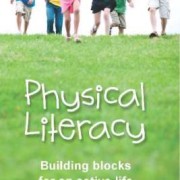LTAD/PHYSICAL LITERACY
In the booklet “Developing Physical Literacy: A Guide For Parents of Children Ages 0 to 12” Canadian Sport for Life defines Physical Literacy as the development of fundamental movement skills and fundamental sport skills that permit a child to move confidently and with control, in a wide range of physical activity, rhythmic (dance) and sport situations. Physical Literacy also includes the ability to “read” what is going on around them in an activity setting and react appropriately to those events. For full physical literacy children should learn fundamental movement and sport skills in each of the four basic environments: on the ground, in the water, on snow and ice, and in the air.
Being physically literate will give children the tools they need to take part in physical activity and sport. It is widely known that being physically active through all of life’s stages depends on feeling confident in one’s ability in an activity setting. This early confidence and active lifestyle through all the stages is more likely to create healthy life-long enjoyment and therefore a healthier Canadian population.
Developing movement skills early in life assists in the development of the whole child. The Canadian Sport Centre states in “Physical Literacy Concept Paper” that early childhood educators have become increasingly aware that movement plays an important role in the healthy development of a young child. In particular, previous research has demonstrated that the development of rhythmic activities during this critical period of development assists in the development of coordination, language and reading, voice reproduction, intelligence, and future complex movement patterns.
Fundamental movement skills are broken into 3 categories 1) stability, 2) locomotor and 3) manipulative and follow a developmental sequence that sees stability skills taught first followed by locomotor and finally manipulative skills. (A specific list for each area will occur in a later newsletter.)
Fundamental sport skills involves the utilization of a series of fundamental movement skills in a specific way or for a specific purpose. Running and kicking are examples of movement skills. Running to and kicking a soccer ball toward a net or teammate is a sport skill. It is vital that movement skills come prior to sport skills. Exposing participants to sport skills too early will often result in participants hitting a proficiency barrier. This results in frustration, failure, incompetence and a decline in motivation. This in turn is a major reason for withdrawal from physical activity and sport.
This means that we all have a role to play in the creation of movement and sport skills. Parents and guardians must be the lead for their children but everyone from daycare, pre-school teachers, school teachers, youth leaders, recreation leaders, and coaches play a critical roll. The optimum learning environment has lots of opportunity for play and practice with encouragement and instruction and the opportunity to use the skills learned leading to body and brain development.
More on Physical Literacy and LTAD in future newsletters.




